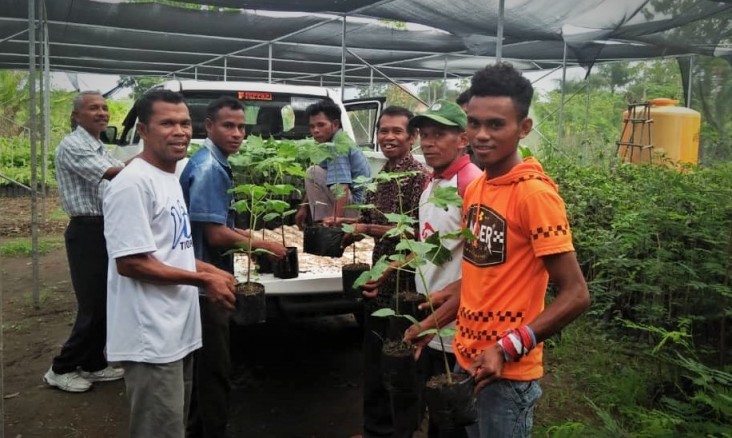Speeches Shim

Teaching and practicing conservation agriculture techniques is a large part of USAID’s Increasing Community Resilience in Oeccuse activity (ICRO), which focuses on helping communities preserve and protect community water sources. In turn, that increases community self-reliance. It’s an important part of the activity because of the scarcity of water and uncertainty of rains, even during the December-April rainy season.
The rains arrived in December, but very little fell across the region. ICRO and communities were concerned about delays in planting trees that help preserve and secure community water supplies. However, planting started and between December and early January, 20,000 saplings were distributed to 43 conservation areas from five community nursery centers. The centers had produced more than 80,000 saplings and the Forestry Department contributed 6,000 more.
As well as using saplings grown in the ICRO nurseries, the in-hole tillage agriculture technique and the application of organic matter into the holes has helped to absorb water for a longer time. Communities also found that the planting techniques increased plant growth even with little rain. ICRO, local NGO partners and the Forestry Department are confident use of the agroforestry techniques will increase the number of plants growing inside conversation areas, making communities better able to withstand the challenges of maintaining adequate water supplies.

Comment
Make a general inquiry or suggest an improvement.